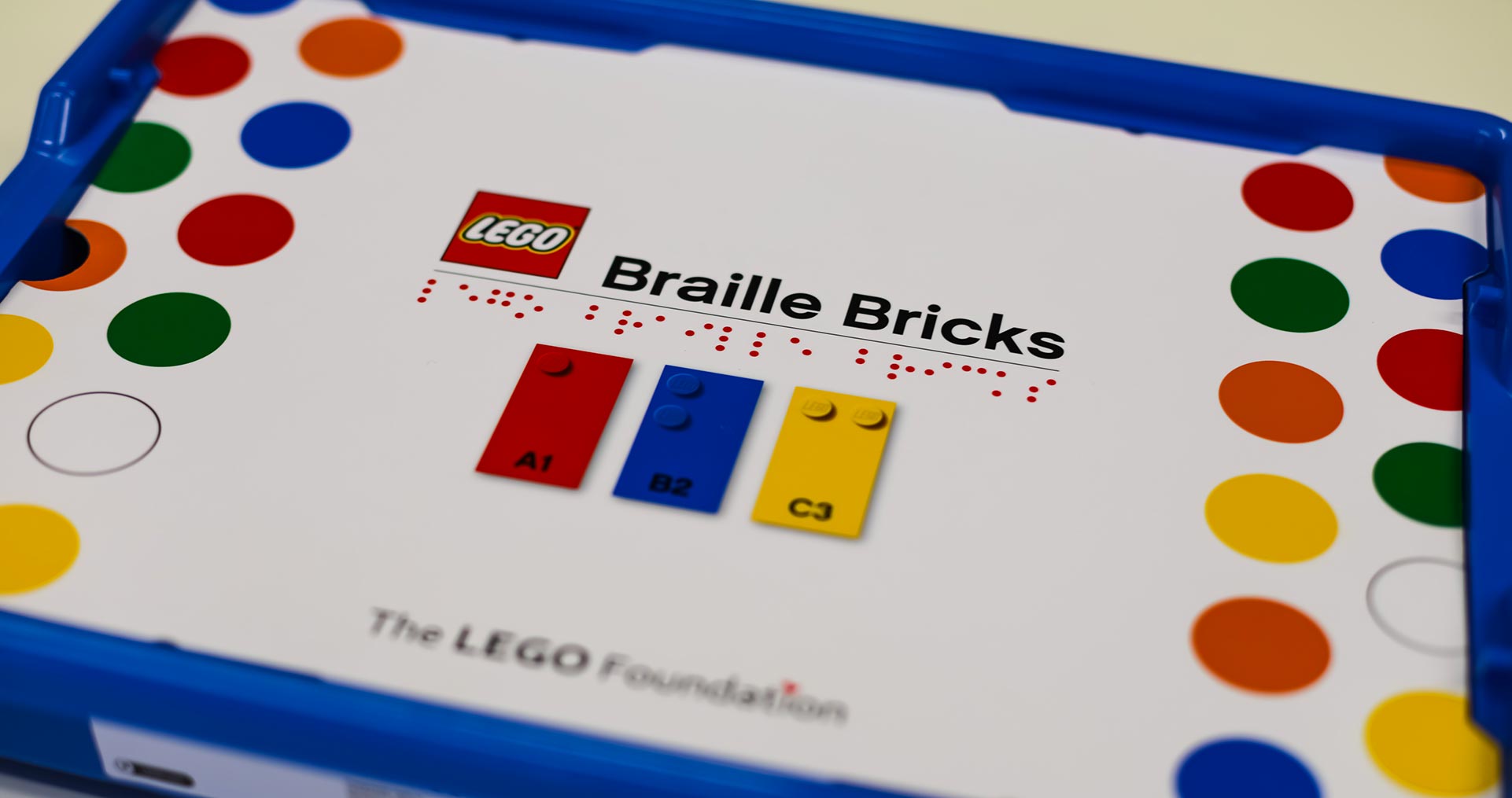
LEGO’s Commitment to Learning Through Play for the Visually Impaired
[Music]
Sean Randall – IT Teacher: For blind people Braille is literacy. The
only other real option for someone who’s got no sight is to listen and by listening you lose a lot of spelling, grammar, punctuation.
Boy Student 1: I started learning Braille when I was five. It empowers me
and enables me to do things that I would have never been able to do before.
David Hinds – English Teacher: What we are doing here today is showing the potential of Lego Braille bricks to help children learn Braille and to engage with the process of Braille.
Sue Lock – Mathematics Teacher: Children dislike making mistakes. If you’re using a Braille machine your mistakes are there, written large. Children love being able to make something, unmake it if it’s wrong and make it again, and that is the important thing that Braille bricks does and it is making mathematics, English, Spanish, French literacy far more
accessible than it ever was before.
Boy Student 2: We’ve just been multiplying, dividing…
Sue Lock: including
Boy Student 2: including the ummm
Sue Lock: decimals
Boy Student 2: decimals
Sue Lock: which is quite challenging
Boy Student 2: Very Challenging. [Scene Cuts to boy touching legos on lego plate] Hundredths… tenths… units
Beatriz Molina – Spanish Teacher: I mainly use the bricks in Spanish. It’s given us another tool to explore learning languages and Paige you enjoy it right?
Paige – Girl Student 1: Yeah
Beatriz Molina: [Speaks in Spanish] Muy bueno.
Paige: Gracias
[Upbeat music begins]
Girl Student 2: It’s different for anything I’ve done before and especially with younger students I think it helps them to fiddle
and play.
Boy Student 1: It’s having something tangible that you can rearrange in so many ways.
Sean Randall: It’s ridiculous that all it does for us really is give us convenient access to moving letters around but that opened up so many doors and that’s a wonderful thing.
David Hinds: Lego Braille bricks make learning more fun. I gave them to my students just to see how they would get
on with them. Couldn’t get them off them. We spent the
whole lesson making up games and playing with them, it was just such an engaging and fun time.
Sue Lock: Using the Braille bricks yesterday, I saw that moment where a child actually has properly understood something and we know what it feels like ourselves when it finally clicks into place and we say yeah, “I’ve got it”. When you see that in a child, that is what keeps teachers going
[Upbeat Music Continues]
Staying true to their commitment to redefining play and reimagining learning, the LEGO Foundation and LEGO Group are taking steps to ensure that LEGOs can be experienced by all children, especially those who are visually impaired.
In August, LEGO debuted its first audio and Braille building instructions, a free service that gives visually impaired people a new way to build. The instructions were inspired by Matthew Shifrin, a blind LEGO fan from Massachusetts, who, with the help of his babysitter, Lilya Finkel, developed their own project to make LEGO instructions accessible to him and other blind children.
On Shifrin’s thirteenth birthday, Finkel gifted him the 821-piece “Prince of Persia Battle of Alamut” LEGO set, but she didn’t stop there. She invented a unique name for each LEGO piece in the set and spent hours creating a binder full of building instructions in Braille that detailed how to fit each piece together.
That was the first time Shifrin completed a Lego build from start to finish without any help.
This single binder led to a website with instructions for 45 other Lego sets called “Lego for the Blind.” The website then led to Finkel typing up instructions on the computer and Shifrin listening to them and following along with his screen reader to test their accuracy. This finally led to the LEGO Creative Play Lab adapting their system and offering it online for free as well.
Currently, four different LEGO sets offer these instructions through audio or Braille, which can be translated by a Braille reader, with more to come.
This is the first step in LEGO’s commitment to making their products accessible to children of all abilities.
Motivated by stories like Shifrin’s, the LEGO Foundation and LEGO Group are launching LEGO Braille Bricks in 2020 to bring a playful and inclusive approach to teaching Braille to children.
With assistive technologies, audiobooks, and computer programs available for the visually impaired, fewer children are learning to read Braille. In the United States, the National Federation for the Blind reports that only 10% of blind children are learning how to read Braille, compared to over 50% in the 1950s.
“In the LEGO Foundation, we believe children learn best through play and, in turn, develop the breadth of skills, such as creativity, collaboration, and communication, that they need in the post-4th Industrial Revolution,” said John Goodwin, CEO of the Lego Foundation. “I hope children, parents, caregivers, teachers, and practitioners worldwide will be as excited as we are, and we can’t wait to see the positive impact.”